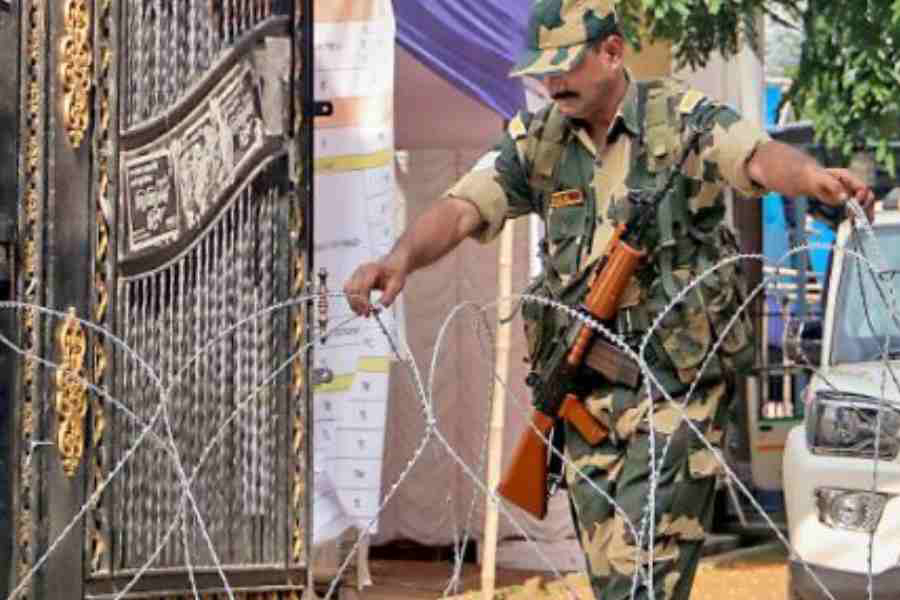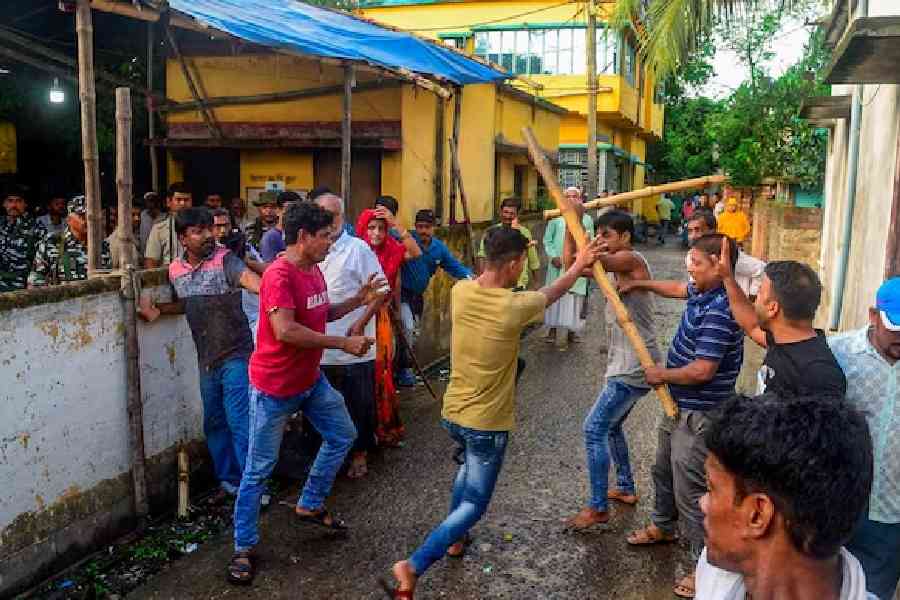Bengal on Saturday reaffirmed its reputation as the country’s most politically violent state, reporting at least 18 deaths on the day of the panchayat elections after a body count of 22 in the run-up to the vote.
Seventeen of the dead, including seven who died on Saturday, were from the Trinamul Congress, a point the ruling party emphasised as it sought to deflect most of the blame for the bloodshed on the Oppositio
Five years ago, at least 19 people had died on polling day – even with 34 per cent of the seats uncontested – after 14 had been killed during the campaign.
According to figures that chief minister Mamata Banerjee had cited repeatedly during the campaign this time, at least 39 deaths had been witnessed during the 2013 panchayat election process, 36 in 2008 and 70 in 2003.
Yet, a healthy 66.28 per cent turnout had been recorded till 5pm. With lakhs among the total 5.67 crore registered voters still in queue at the time, the final figure is expected to rise substantially.
The lack of security in and around the polling booths stood out despite the deployment of 660-odd companies of central forces (against the allotment of 822 companies).
The discourse in the run-up to the elections had been that the central forces, if somehow deployed, would be a single-pill cure to most, if not all, of the problems and ensure peaceful elections.
In reality, they were barely visible despite the judiciary’s orders and the assurances from the BJP-led Union government.
Numerous booths across swathes of North and South 24-Parganas, Malda, Murshidabad, Cooch Behar and East Midnapore that were supposed to receive security cover from the central forces got none.
The crucial confidence-building activities that the central forces perform during elections, such as area domination, were virtually non-existent.
The central forces fiasco prompted the Congress and the CPM to allege a “setting” between Mamata and Prime Minister Narendra Modi.
The BJP insisted that the utilisation of the central forces was completely in the hands of poll panel chief Rajiva Sinha and the state government, and that they had made sure the troops were rendered ineffective.
"State poll panel chief Rajiva Sinha did not do anything to contain the violence.... He should be held responsible for all the deaths," said leader of the Opposition Suvendu Adhikari of the BJP.
Adhikari visited the state election commission in the evening and put a lock on the office gate.
Although the Opposition was united in blaming Trinamul for all the trouble, a feature of the day was the so-called “resistance”, as part of which the BJP, Congress and the CPM gave back as good as they got in their pockets of strength across north and south Bengal.
The last panchayat election in Bengal to witness a similar trend was the one of 2008, when the then ruling Left Front was handed out this brand of “resistance” by an ascendant Trinamul.
The Congress and the CPM slammed Trinamul. “This valley of death is not my land…. Even if half or more of them (the dead) were with Trinamul, are those deaths not utterly regrettable? What have we been reduced to?” asked CPM central committee member Sujan Chakraborty.
State Congress chief Adhir Ranjan Chowdhury saidBengal had witnessed “mayhem”.
The BJP alleged a “total collapse of law and order” in Bengal and demanded President’s rule. The party has decided to raise the poll violence before the high court on Tuesday.
“This state government cannot be allowed to continue,” state BJP spokesperson Samik Bhattacharya, said.
Trinamul tried to clear its name by highlighting its own body count, playing down the scale of violence, and blaming the Opposition and the central forces. However, the Opposition blamed the Trinamul deaths on alleged infighting.
“There are 14 districts where the entire election procedure has been smooth. Major incidents of violence have occurred in nine booths, and minor incidents in 60-odd booths,” Trinamul state general secretary Kunal Ghosh said.
“The total number of booths across the state is 61,539. So the percentage works out to 0.00097.”
If 69 booths were affected by violence among 61,539, the percentage comes to 0.11.
Ghosh flagged alleged instances of malpractice and violence by the BJP, Congress and the CPM in Cooch Behar, North 24-Parganas, Nadia, Malda, Murshidabad and North Dinajpur, and accused them of trying to malign Bengal.
“The question worth raising is, where were the central forces, which the Opposition had demanded, and why couldn’t they control the violence?” he said.
“The Opposition parties have realised that they lack the support of the public and are therefore making absurd statements. This is a classic case of sour grapes.”
A political scientist who teaches at a state-run university said that none of what took place during the campaign or polling was out of character for Bengal.
“A peaceful election in Bengal, especially under the state’s poll panel and administrative machinery – irrespective of which party is in power – remains a pipedream even in 2023,” he said.
“It’s embarrassing and rather tragic for an otherwise largely gifted and liberal people. Regrettably, this is unlikely to change drastically in the foreseeable future.”
source : The Telegraph



